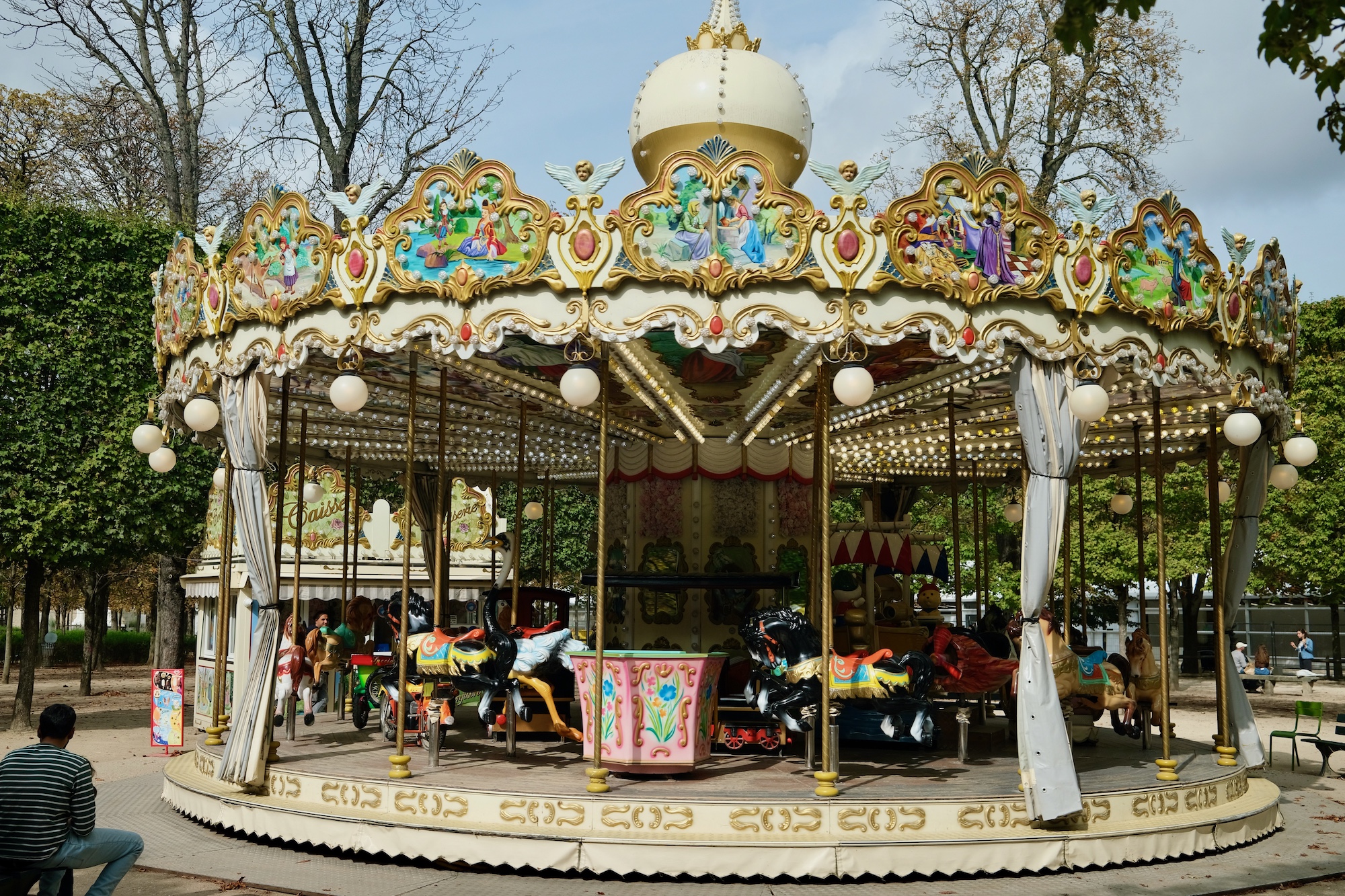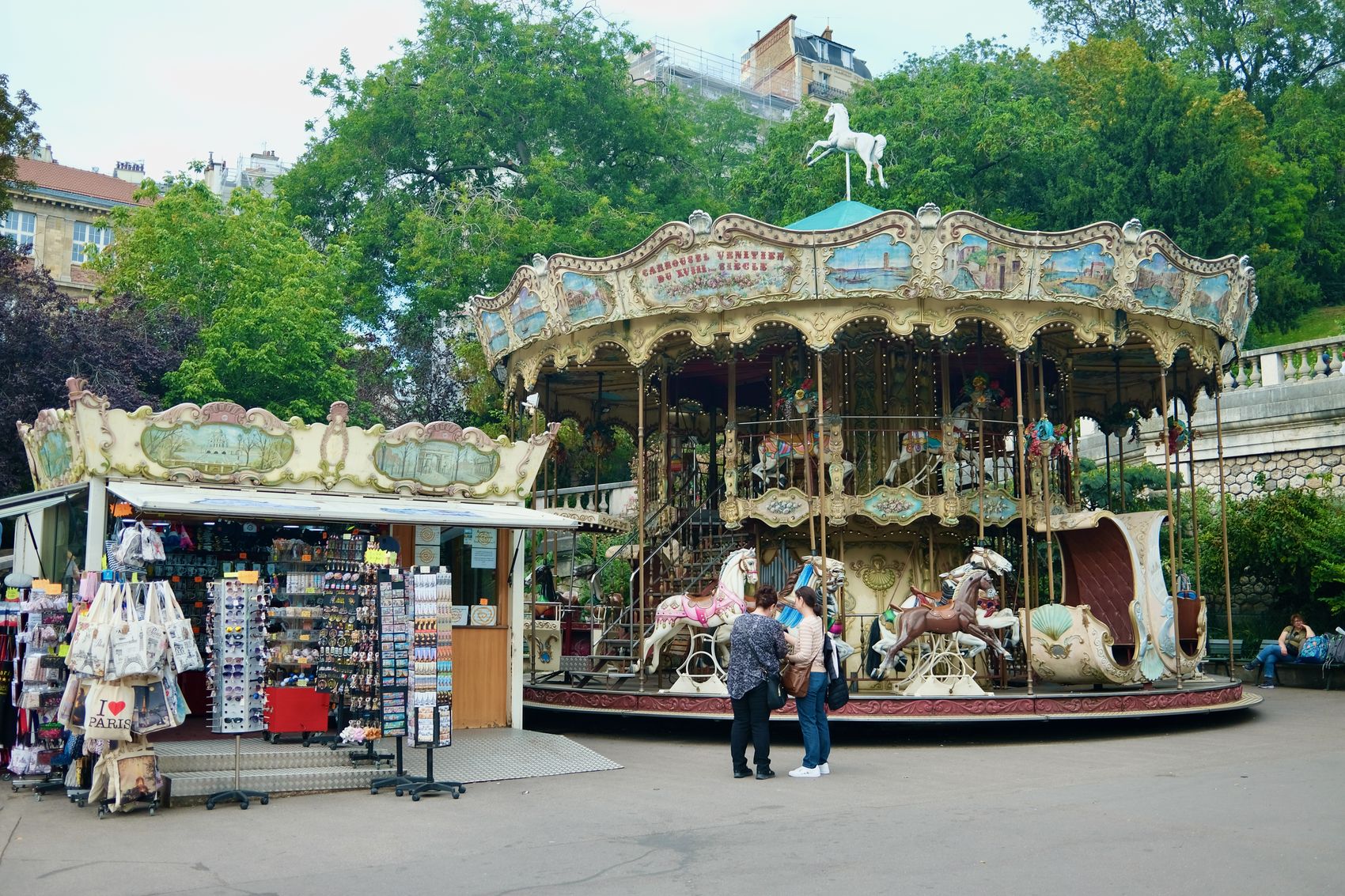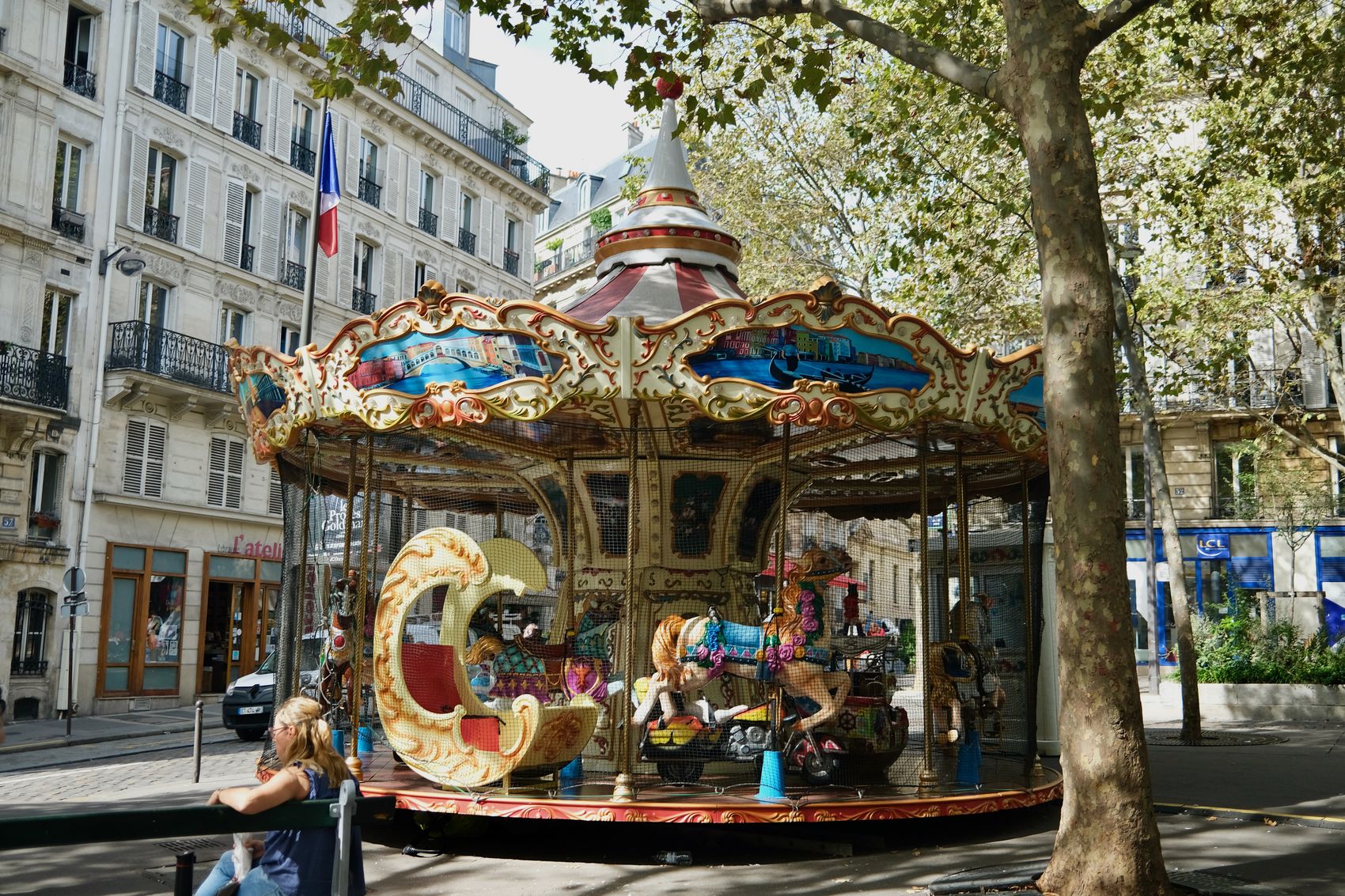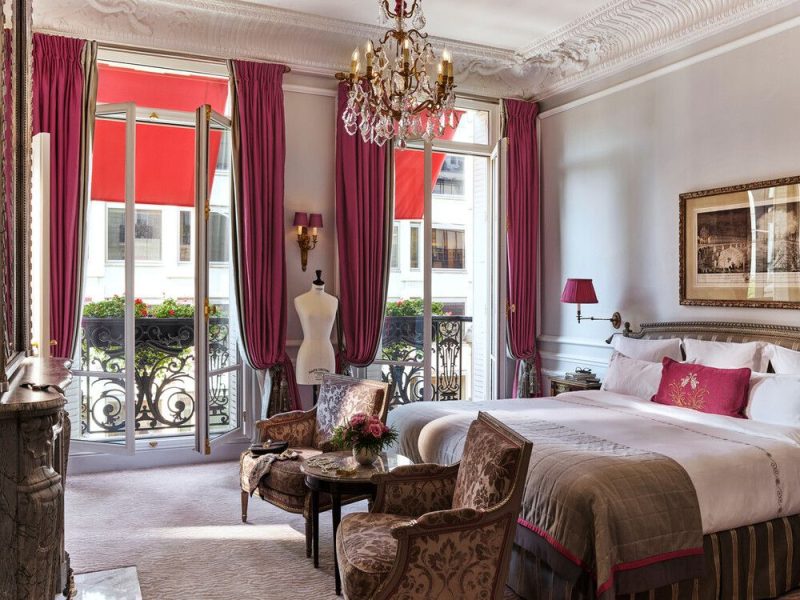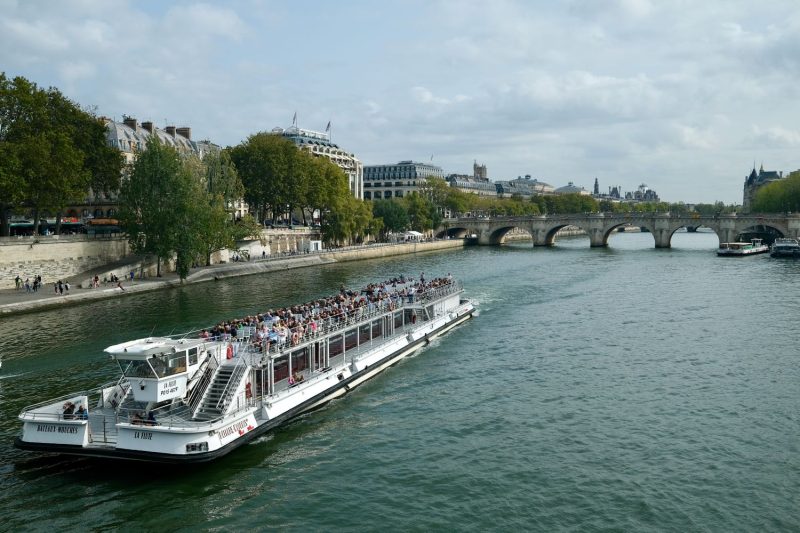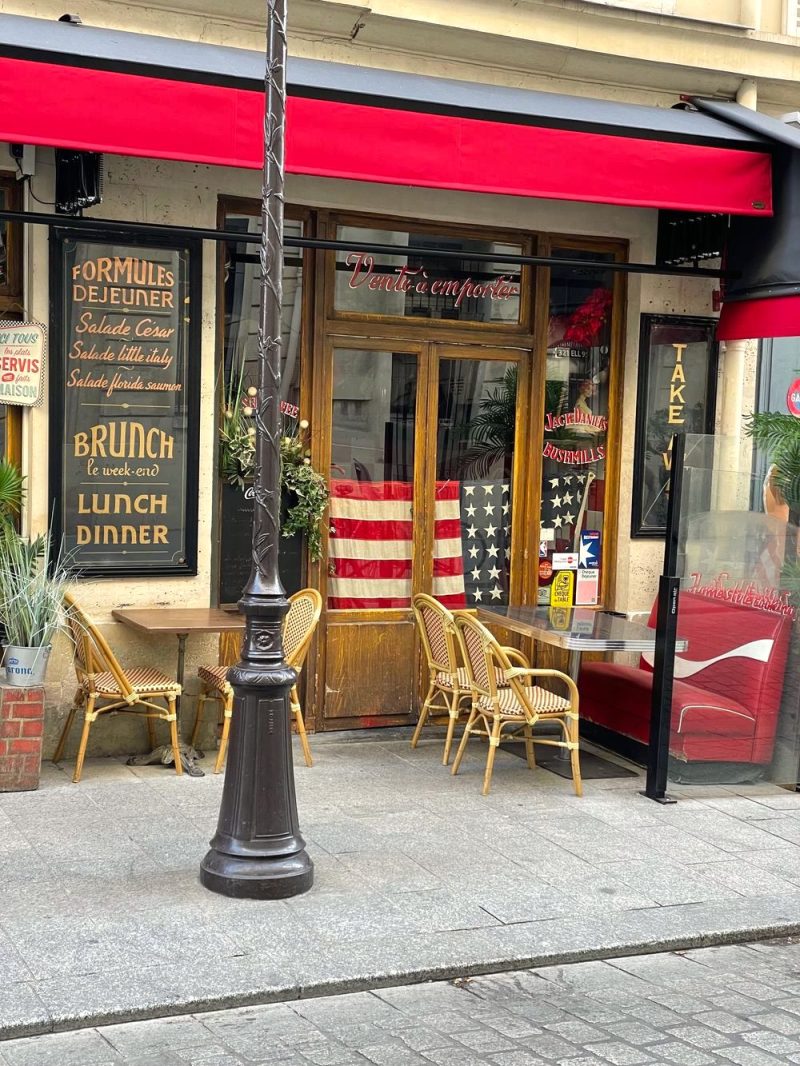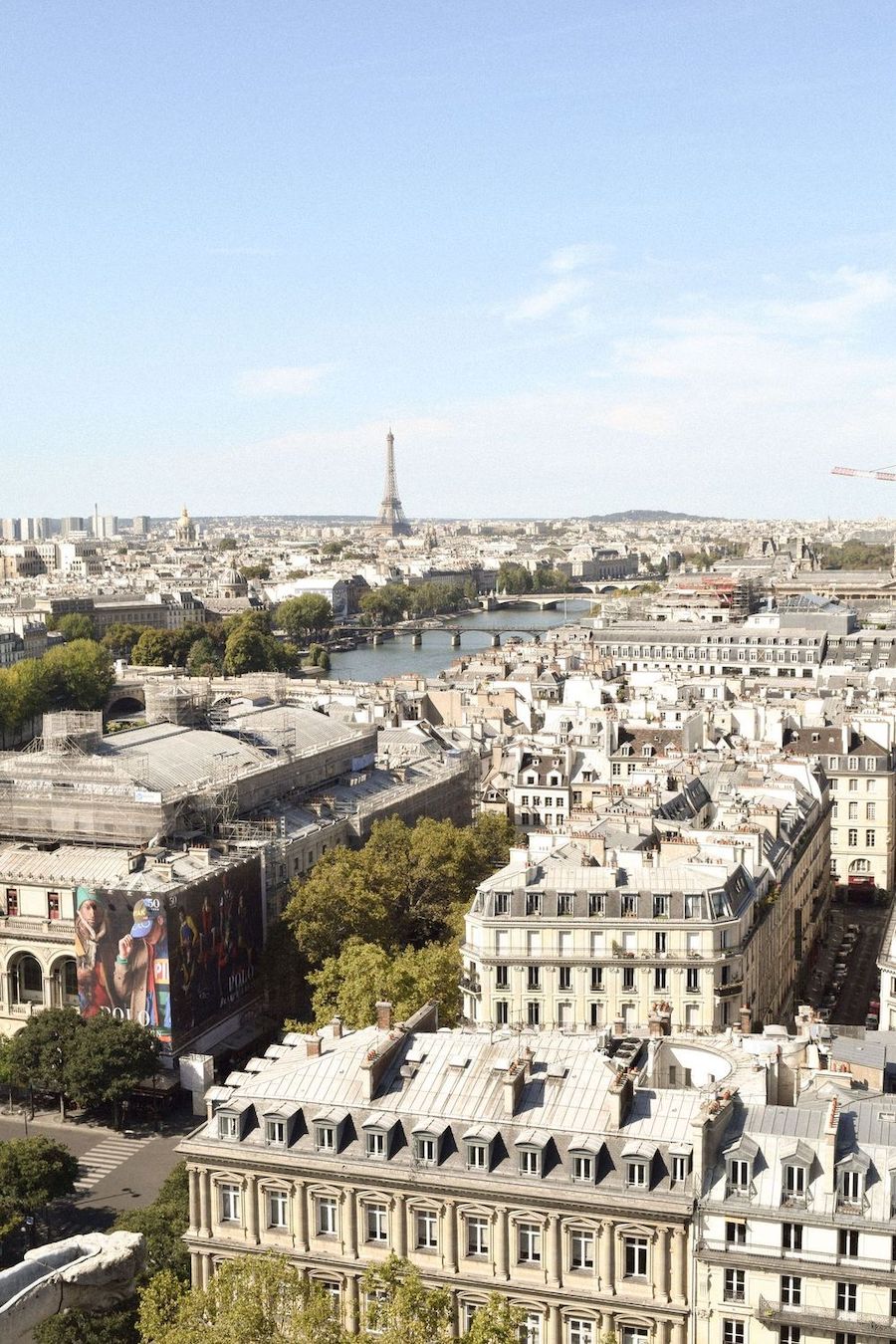The Whimsical Charm of Paris Carousels and the History Behind Them
Culture Travel may earn a commission through links on this website. As an Amazon Associate, we earn from qualifying purchases.
Carousels in Paris typically stand out for their artistic design and craftsmanship. Many are adorned with colorful lights, intricate decorations, and traditional music that creates a nostalgic atmosphere. The Carrousel de la Tour Eiffel, for instance, features rides for both children and adults, making it an attractive spot for families visiting the area.
The carousel is an ornate and charming attraction that captures the whimsical spirit of Paris.
History
French carousels have a rich and fascinating history that reflects broader developments in entertainment, craftsmanship, and public leisure.
Medieval Origins
The word “carousel” (or “carrousel”) comes from the Italian “carosello,” referring to elaborate equestrian tournaments popular among European nobility in the 16th and 17th centuries. In France, these were spectacular military exercises where horsemen would perform choreographed drills and games, including trying to spear suspended rings while riding, which would later inspire the ring-catching game on mechanical carousels.
17th-18th Centuries: Royal Spectacles
One of the most famous early carousels was held by Louis XIV in 1662 at the Place du Carrousel in Paris (which still bears that name today). These grand events featured elaborately costumed nobles on horseback performing coordinated movements. They were as much about demonstrating wealth and power as entertainment.
19th Century: The Mechanical Revolution
The French were pioneers in transforming carousels into the mechanical amusements we know today. By the early 1800s, simple hand-cranked and animal-powered rotating platforms with wooden horses appeared at fairs. French craftsmen became renowned for their ornate carousel art, featuring beautifully carved and painted horses, exotic animals, and gondolas.
The golden age arrived in the late 1800s when steam power and later electric motors enabled larger, more elaborate carousels. French manufacturers like Gustave Bayol became famous throughout Europe for their carousel craftsmanship, exporting their creations internationally.
Belle Époque and Beyond
During the Belle Époque (1871-1914), carousels became fixtures in Paris and throughout France – in parks, town squares, and at traveling fairs. The French style emphasized artistic elegance, with each carousel often being a unique work of art featuring mythological creatures, elaborate mirrors, and ornate decorative panels.
Many historic French carousels still operate today, including the famous double-decker carousel near the Eiffel Tower and several in Parisian parks, maintaining this charming tradition.
Enjoy your ride on the famous French carousels!
